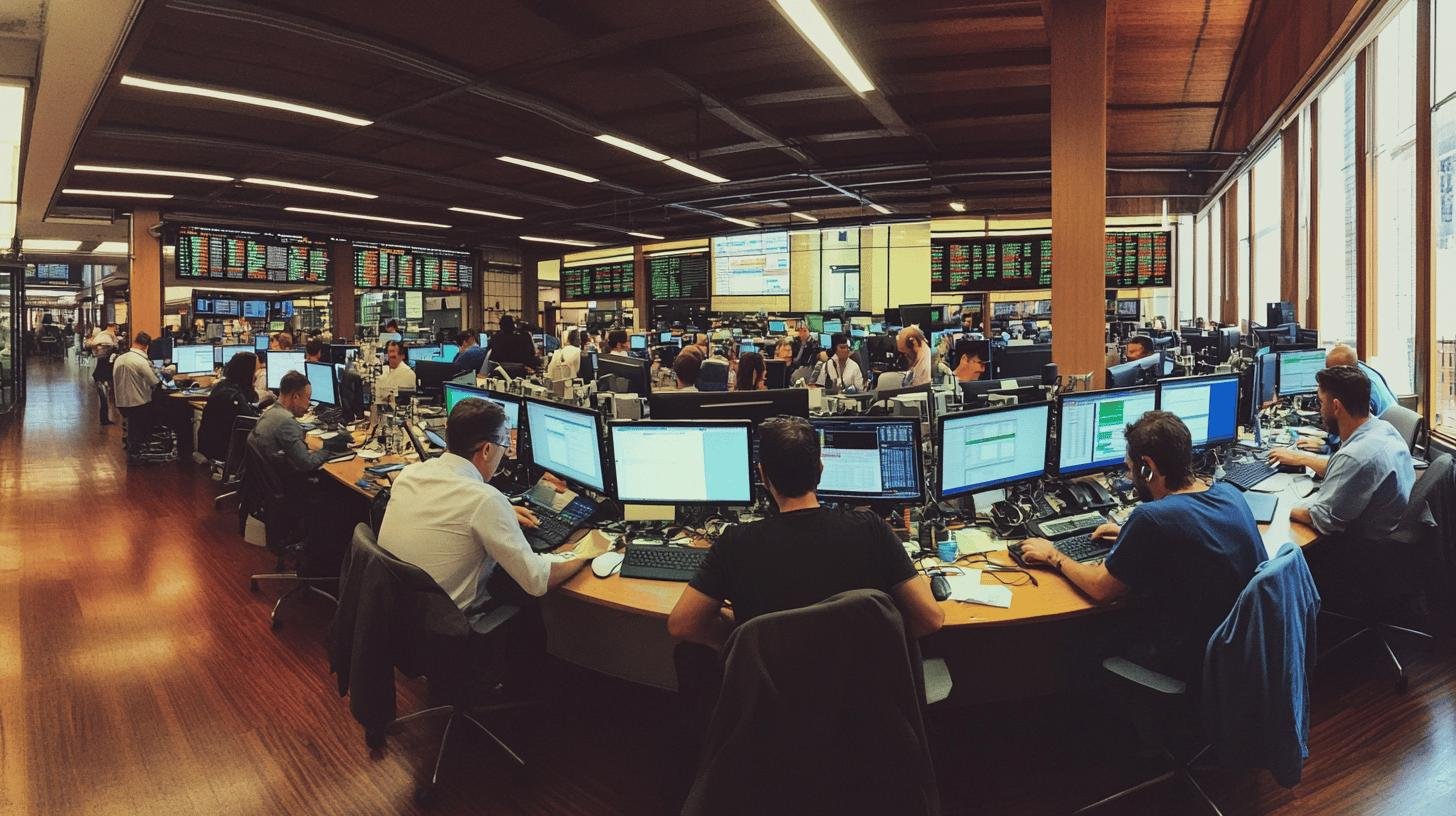TL;DR:
- Laissez-faire economics involves minimal government interference in business.
- Originates from the French phrase meaning “let us do.”
- Promotes personal freedom, innovation, and competition.
- Key pro: Encourages entrepreneurship; con: Can lead to inequality and market failures.
- Historical examples: Industrial Revolution (growth vs. poor conditions) and 1774 French grain industry (shortages from deregulation).
- Influences modern neoliberal policies emphasizing deregulation and privatization.
- Compared to mixed economies, which balance market freedom with government roles for stability and equity.
- Essential to balance market forces with social welfare to prevent neglect of public interests.
Can letting businesses run free without government help truly work wonders for the economy? Or does it open the door to chaos, inequality, and exploitation? These are the burning questions at the heart of the laissez-faire economics debate. Rooted in minimal government meddling, this approach promises ultimate freedom but at what price? From Adam Smith’s era to the present day, the tug of war between freedom and control continues. In this blog, we dive into whether laissez-faire economics is a goldmine of opportunity or a Pandora’s box of economic woes.
Understanding Laissez-faire Economics
Laissez-faire economics is known for having little government interference, allowing businesses to make their own production choices. This idea comes from the French phrase “Nous laisser faire,” which means “let us do.” It suggests a hands-off approach to economic issues. The core belief is simple: fewer regulations provide businesses with more freedom to succeed.
In classical economics, laissez-faire was very important. Adam Smith, in his famous book “Wealth of Nations,” argued that when people follow their interests, society benefits overall. He believed a self-regulated market could balance supply and demand naturally, without strict government policies. Smith’s ideas laid the foundation for laissez-faire, promoting a system where government involvement is limited, and individual enterprise is encouraged.
Pros and Cons of Laissez-faire Economics

Is laissez-faire economics beneficial? It promotes personal freedom and growth. With fewer regulations, businesses are encouraged to innovate and start new ventures. The Industrial Revolution is a classic example: minimal regulations led to rapid economic growth.
Benefits of Laissez-faire Economics:
- Encourages innovation and entrepreneurship
- Promotes efficient use of resources
- Reduces government regulation costs
- Increases competition, improving quality and lowering prices
- Offers consumers many choices
However, critics say laissez-faire can cause inequality and market failures. Without regulation, wealth can concentrate, leaving many behind. Public goods might be undersupplied, causing societal harm. Environmental damage and worker exploitation are risks without oversight.
Compared to mixed economies, laissez-faire lacks balance. Mixed economies combine market freedom with government roles to prevent inequalities and inefficiencies. This approach seeks steady growth while ensuring social welfare, contrasting with full market reliance.
Historical Examples of Laissez-faire Economics
The Industrial Revolution is a key example of laissez-faire in action. With little government intervention, industries grew, leading to major economic and technological advances. Businesses could operate freely, speeding up industrialization and increasing production.
But not everything was positive. Significant challenges appeared, such as poor working conditions and high income inequality. Workers endured long hours in unsafe environments, with few rights, showing the need for some regulations.
Major Effects of Laissez-faire During the Industrial Revolution:
- Rapid industrial and technological growth
- Widespread economic increase and production
- Poor working conditions and significant income inequality
Another historical instance was the French grain industry in 1774. The government removed grain trade controls to liberalize the market. However, this led to shortages and high prices, causing public unrest and riots. The lesson was clear: unchecked laissez-faire policies can lead to market instability. The government had to restore market controls to stabilize the situation, highlighting the need for some intervention.
Laissez-faire Economics and Modern Economic Policies

How has laissez-faire affected modern policies? It strongly influenced contemporary neoliberalism, promoting deregulation and free-market capitalism. This is shown in privatization trends, where state assets go to private entities to boost efficiency and competition.
Laissez-faire principles appear in modern practices, where markets lead resource distribution with little government interference. However, critics argue these policies can increase economic gaps. Wealth tends to concentrate at the top without regulation, leaving others behind. This inequality calls for government intervention to ensure fair opportunities and prevent market failure.
Laissez-faire Economics: Comparing with Other Models
How does laissez-faire compare with mixed economies? Mixed economies usually provide more stability and fairness. They merge free markets with government intervention, aiming for balanced growth while addressing social needs.
While laissez-faire supports rapid growth and innovation, it can cause wealth concentration and neglect public interests. Mixed economies try to share wealth more evenly, ensuring broader benefits from economic progress.
| Economic Model | Key Characteristics | Benefits | Drawbacks |
|---|---|---|---|
| Laissez-faire | Minimal government intervention | Encourages growth and innovation | Can lead to inequality and market failures |
| Mixed Economies | Combines free markets with government oversight | Ensures stability and equity | Potential for over-regulation and inefficiency |
Balancing market freedom and government role is vital for a thriving economy. A hands-off method can boost growth but may overlook social and environmental impacts. Finding the right mix can harness market forces while safeguarding public welfare.
Final Words
Exploring laissez-faire economics revealed its roots in classical theory, promoting minimal government interference to boost individual and public prosperity. The benefits promise economic freedom and growth, while drawbacks like inequality indicate it’s not without flaws. Historical contexts, like the Industrial Revolution, show both progress and pitfalls.
In modern times, laissez-faire influences policies favoring deregulation and privatization. Yet, minimal interference requires a cautionary approach to prevent imbalances. Comparing with mixed models highlights the need for balance, raising the question: Is laissez-faire economics good for crafting economic policies today? Balancing freedom and regulation seems key to a brighter economic future.
FAQ
Is a laissez-faire economy good or bad?
A laissez-faire economy offers more business freedom, boosting growth and innovation. Yet, it can cause inequality and market issues without regulation. Balancing this system with some oversight can help manage those challenges.
Is laissez-faire a good system?
Laissez-faire supports economic growth by reducing intervention, promoting entrepreneurship. Still, its drawbacks include wealth gaps and potential market failures, needing some regulation for balance and fairness.
How did laissez-faire help the economy?
Laissez-faire encourages innovation and economic growth by letting businesses operate freely. The Industrial Revolution thrived with this, but it also led to worker exploitation and inequality due to minimal oversight.
Is laissez-faire leadership good or bad?
Laissez-faire leadership allows autonomy, fostering creativity and self-motivation. However, it might cause confusion and low productivity without guidance, especially in teams needing clear direction and support.
What is laissez-faire capitalism?
Laissez-faire capitalism means minimal government interference in business, emphasizing free markets. It champions individual choice and economic freedom but can lead to inequality and inefficiencies if unchecked.
Who was Adam Smith and how is he related to laissez-faire?
Adam Smith, a key figure in classical economics, advocated laissez-faire in his work “Wealth of Nations.” He believed private self-interest benefits society, supporting minimal government interference in economies.

